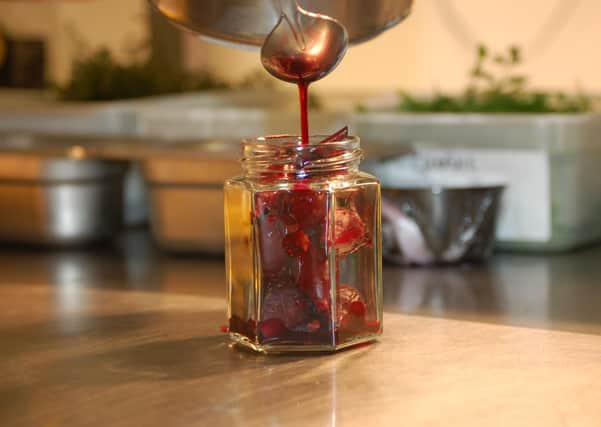A positive thing about lockdown is I have time now to preserve things


I’m fully equipped with lots of empty kilner jars and I ordered a 10 litre drum of cider vinegar from Long Meadow Cider.
This is the real McCoy in terms of acid. You can buy cider vinegar in supermarkets but it doesn’t have the mother.
Advertisement
Advertisement
This is a substance composed of cellulose and acetic acid bacteria that develops on fermenting alcoholic liquids.
Along with oxygen from the air it turns alcohol, like wine, cider or beer, into a vinegar. When health experts tell you to take a tablespoon of cider vinegar in the morning, this is the one they’re referring to, not the supermarket variety. It costs more than regular vinegar but has an infinitely superior flavour profile.
The pungent wild garlic season is coming to an end but the flower buds can be pickled and used, sparingly, for the months to come. Wash the green budded heads and place in a sterilized jar. A good pickling solution is 100ml of cider vinegar, 100ml of water, 50g sugar and a teaspoon of salt. Simmer until the sugar has dissolved, cool and use to preserve all manner of things. I found a large beetroot at the back of the vegetable department of my fridge. A rough estimate is that it’s been in there for three months but it was perfectly fine. My mum and late granny used to pickle beetroot. When I was young I hated beetroot (I love them now) and the sight and smell of them boiling used to make me feel a bit nauseous. I did love the sight of them though, deep purple chunks suspended in vinegar in jam jars. Rather than boil beetroot, I now wrap them in tin foil and bake them in the oven, taking away all that steamy action in the kitchen. My first recipe is for sweet and sour pickled beetroot. It makes a lovely side for leftover roast beef, with goat cheese or with oily fish.
As well as being used for preserving, vinegar can be used to “cook” fish. A classic example is soused herring. The fish fillets are soaked in salt brine, then rinsed and submerged in an acid solution with onions. After a couple of days the vinegar has flavoured and acid “cooked” the fish. Make sure you use very fresh fish for this. You could also use mackerel. While the herring is “sousing” you could make some pickled tomatoes to accompany them. My recipe calls for the tomatoes to be pickled with onions, chilli, an aromatic fried ginger, garlic and spice mix and vinegar and sugar. They’ll be ready in a day and are delicious with the fish blended with horseradish and oil. The dressing would be equally as good with grilled meats, cheeses or grilled fish. As the season moves on I’ll be pickling everything that’s available – elderflowers, cucumbers, courgettes, onions…